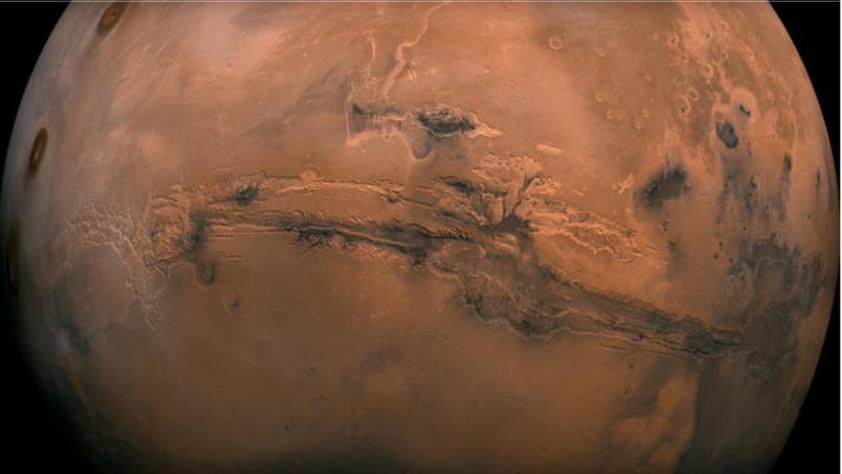Fleeting Wonders: A Surprisingly Huge Ice Sheet on Mars

Surface evidence of the massive ice sheet found on Mars. (Photo: NASA)
As NASA’s Curiosity rover makes its way across the Red Planet, the images coming back have been breathtaking. And thanks to the internet, the public has a front seat view of an an entirely ground-breaking expedition.
Curiosity is our best shot at locating extra-terrestrial life, so perhaps that’s why we’ve expected a lot out of the Mars mission lately. With images of the planet’s surface available online to analyze, hawk-eyed conspiracy theorists have spotted everything from a tiny lady, an iguana, and even a downed Star Wars space ship in the dry Martian sands.
According to NASA, these finds are highly improbable–and likely chalked up to a phenomenon called pareidolia, in which your brain recognizes patterns that aren’t actually there when confronted with a strange object.
That’s what makes Ali Bramson’s Martian discovery so notable. A graduate student at the University of Arizona’s Lunar and Planetary Laboratory, Ali spotted something she’d never expected to see when combing through Curiosity’s images: “a crazy looking crater,” in her words.
As CBS reports, this particular crater is huge, and terraced, rather than the more common bowl-shaped craters created by asteroid impacts. Terraced craters, while common in this section of Mars (known as Arcadia Planitia), don’t exactly match up with the established physical models of the planet.
Trying to figure out what may have caused the terraces to form, Bramson and her colleagues posited that there must be some sub-surface process going on. After modeling the crater in three dimensions, the researchers made a shocking discovery: there was ice under the crater, and there was a ton of it.
Measuring up to 130 feet thick, and covering an area larger than the states of Texas and California combined, the subsurface ice sheet was formed as a result of continuous snowfall millions of years ago.
But the location of the ice is what most surprised the researchers. Scientists are aware of ice sheets on Mars’ poles, but have never found any evidence of it at mid-latitudes. The ice Bramson found should be unstable in current climactic conditions, meaning, it should have melted millions of years ago. The persistence of the ice sheet gives researchers a fascinating window into Mars’ climactic history.
So how has the ice remained underneath the hot, dry Martian surface for eons? “That’s what we need to investigate,” said Shane Byrne, an associate professor at the Lunar and Planetary Laboratory said in a press release. “There’s no climate model that we have now that explains this.”
Every day, we track down a fleeting wonder—something amazing that’s only happening right now. Have a tip for us? Tell us about it! Send your temporary miracles to cara@atlasobscura.com.









Follow us on Twitter to get the latest on the world's hidden wonders.
Like us on Facebook to get the latest on the world's hidden wonders.
Follow us on Twitter Like us on Facebook